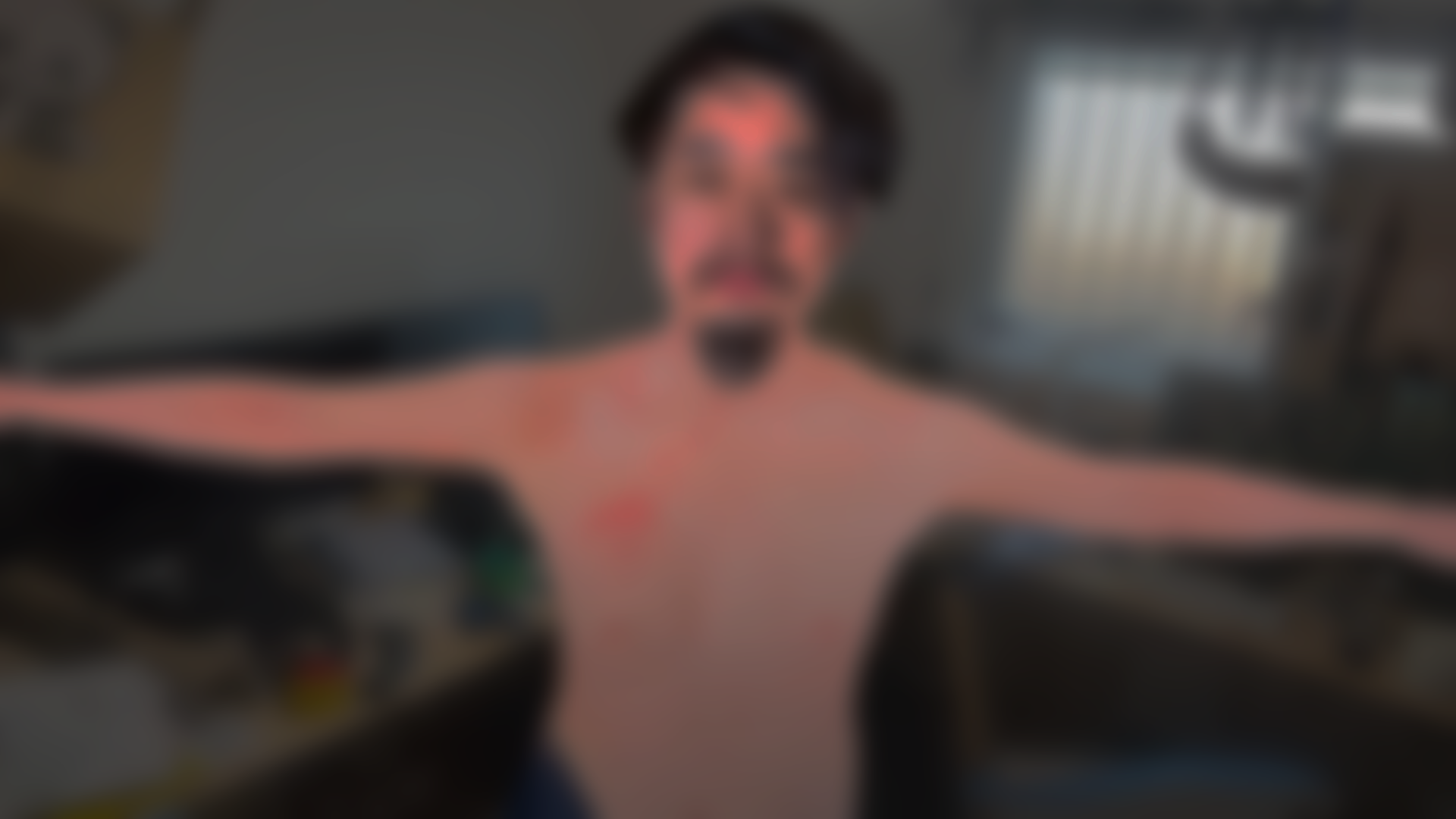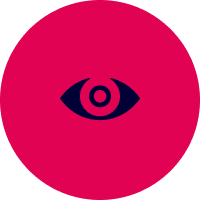Self-Homicide
Katsuki Nogami
Artist |Japan
OTHER PERSPECTIVE
DETAILS OF THE WORK
Experiencing Strangling an Avatar with Your Own Face
This piece deals with the sensitive subject of death. Please only participate if you have given your full consent.
At this stage, the avatar features the artist’s own face, but in the final version, it will have the same face as the participant.
Since the advent of video games, the moral implications of killing in a virtual space have been widely debated. However, such discussions have largely faded as it has become an accepted norm. All you need is a finger pressing the A button—perhaps even enough to launch a missile. In online games, players kill their friends' avatars daily, and on social media, the same fingers that press buttons are used to slander and attack others, sometimes to the point of driving them to death. This disconnect between the real world and the digital display may be the underlying cause.
However, in this Mixed Reality experience, your real hands will carry out the action directly.
Meanwhile, Japan has one of the highest suicide rates among developed countries, a deeply serious issue. The majority of these cases involve hanging. I have lost many people around me to suicide, and I have attempted it myself.
This piece presents a concept that blurs the boundary between self and others, subjectivity and objectivity, specifically for a generation accustomed to POV perspectives in smartphones and games. By seeing oneself from an external perspective, the experience reframes suicide as murder.
It is said that it takes approximately six minutes for a person to die from strangulation. In this experience, participants will strangle their own avatar’s neck for six minutes to feel the length of that time, prompting a reconsideration of the relationship between technology and humanity.

CREATOR PROFILE
Katsuki Nogami
Artist |Japan
2013 a participant at Olafur Eliasson’s Institut für Raumexperimente in Berlin Art University
2015 graduation from the Christophe Charles seminar, the Department of Imaging Arts and Sciences at Musashino Art University in Japan
2018 Visiting artist of Topological Media Lab at Concordia university
2021 Public works sponsored and managed by the Chishima Foundation were permanently exhibited in Kitakagaya, Osaka and Chiba
2024 graduation from the Interface Cultures at UNIVERSITY OF ART AND DESIGN LINZ in Austria
2023-2024 Paris 8 Arts et Technologie de l’Image in France
2023-2024 residency at Cite des Arts in Paris
His works were shown at 17 countries, Selected exhibitions are
Solo exhibition “Foreign Bodies” @Goethe Institute (Shanghai,2017), Ars Electronica@OK Gallery (Austria, 2017, 2023), WRO Biennale at National Museum in Wrocław(Poland,2015, 2019), ELEKTRA@Arsenal Contemporary Art (Montreal, 2018), Negative Horizon@Hong Gah Museum(Taiwan,2016) Scopitone@Castle of the Dukes of Brittany, Stereolux(France, 2016,2015), Japan Media Arts Festival@National Art Museum(Tokyo,2015), MediaAmbitionTokyo@Roppongi Hills Mori tower in Tokyo (2017), FILE SP@Art Gallery of SESI-SP (Brazil,2014).
https://docs.google.com/document/d/1Ld9ovdKoxHCZ7s-037Lg34Z0seroqgn4IKC93HqN96E/edit?usp=sharing

-
I have been following Katsuki Nogami's works chronologically for nearly a decade, ever since the time he co-created the music video EYE for group_inou with Baku Hashimoto, which won the New Face Award at the 2015 Japan Media Arts Festival. And last year, with Body Memory, I had the opportunity to mentor his project for six months, during which I was deeply moved by its delicate, almost literary sensitivity and innocence. Throughout his career, his works have maintained a consistent artistic identity.
Indeed, there has always been a social critique surrounding avatars in his works, yet at the same time, a contradictory self-loathing coexists within them. It is precisely this naivety that allows his work to transcend the categories of media art and cross-reality, resisting being subsumed by technology itself, and instead, embodying the intensity of pure art.
His latest work, Self-Homicide, continues along this thematic trajectory. The motivation behind this piece lies in the conceptual “homicide” that takes place within the virtual and semi-real spaces of online games and social media, occurring day and night. At the same time, it presents a critique of Japan, the developed country with the highest suicide rate. Given this, the theme of “death” in this work is undoubtedly sensitive. However, it is not an expression that encourages or incites suicide or self-harm. On the contrary, one could even imagine that someone might reconsider suicide after experiencing the virtual Self-Homicide within this piece. The work presents its message with such clarity that it cannot be ignored.
Speaking of which, The Complete Manual of Suicide, a book by Tsutsumi Tsutomu that became a million-seller in the 1990s and caused a social phenomenon, paradoxically explained how to survive in this world by keeping the option of suicide as a last resort. At the time, copies of the book were found at numerous suicide sites, sparking widespread controversy. However, in today's internet age, cyberspace is filled with book reviews from people who continue living with this book as their emotional safety net. In other words, it is a double-edged sword.
And precisely because Self-Homicide is a double-edged sword, a warning appears on its overview video on YouTube. This is to be expected. Interpretations vary widely, but the subject of death is inherently present. Simply put, there is concern that the work might connect with viewers' suicidal ideation (intermittent desires for death) or impulses toward suicide. As a result, the national mental health helpline number is automatically linked and displayed on the overview video. This happens because the word "suicide" is included in the title. On YouTube, when you search for "suicide," a message appears saying, You are not alone, and only after clicking Show Results Anyway does the video finally appear. Self-Homicide is no exception—it is undoubtedly a work that must be approached with great delicacy when shared with others.
In the modern age, any work related to such themes must pass through numerous explanations and security measures before granting access, ensuring that the experience remains a conscious choice. Even the experience of Self-Homicide, which does not advocate for suicide but rather urges us to reconsider the trivialization of death, requires this process.
Because of this, we engaged in extensive discussions about this work. In the end, each judge evaluated it from their own unique perspective, leading to the decision to award it the SPECIAL RECOMMENDATION PRIZE. Let us now integrate Katsuki Nogami's latest work into the timeline of his personal artistic history. For the true value of this work will surely be recognized as time goes on. This is the blues that Katsuki Nogami sings.NEWVIEW AWARDS 2024 Jury President
Naohiro Ukawa
Genzai(Just now) Artist / Host of DOMMUNE
-
At first glance, this work evokes the film Westworld, which depicts a massive theme park where visitors can engage in sexual acts with or even kill androids that are nearly indistinguishable from humans. However, what sets this piece apart is its unique approach—by reflecting the user’s own face and having them “kill” themselves, it transforms into a ritual of rebirth and self-renewal.
In reality, one can never truly experience their own death. The only death we can ever fully grasp is that of another. So what happens when we reexamine our own death as if it belonged to someone else?
In a virtual world where taking a life is effortless, this work paradoxically forces us to confront the nature of life itself—precisely because it is fiction. By experiencing the act of “killing” oneself, it offers a space for profound reflection on what it means to exist.
Beyond the question of death, the real challenge lies in how we perceive our own lives. Perhaps this piece functions as a ritual of violent care, compelling us to reconsider the very essence of being.NEWVIEW AWARDS 2024 Jury
Saeborg
Artist
-
I gave this work an almost perfect score during the selection process, but it sparked considerable controversy, mainly due to concerns that the theme of suicide might lead to negative influences.
My focus lies on the artist's courage to confront such social issues through their art, using themselves as a projection in a virtual immersive setting. This approach enhances the audience's empathy and stimulates reflection on societal problems.
I believe that artists carry the social responsibility to provoke thoughts, which is far more significant than merely presenting visually appealing images.
Thus, I think this work needs to be seen by the public.NEWVIEW AWARDS 2024 Jury
Lu Yang
Artist
-
Self-Homicide is a bold and unsettling project that confronts the viewer with the shocking act of self-harm through the lens of mixed reality. While it successfully leverages the constraints of its software to create an impactful and provocative experience, the piece does not yet fully deliver on its ambitious promise. Despite this, its exploration of the relationship between technology, identity, and mortality is striking, and I appreciate its willingness to tackle such difficult and complex themes. It’s a work that challenges and provokes, and would benefit from further refinement.
NEWVIEW AWARDS 2024 Jury
David OReilly
Multidisciplinary Artist
-
The work “Solf-Homicide” was an extraordinary surprise from the very beginning, as it not only goes far beyond the usual canon of XR projects with its bold and delicate thematic approach but also raises essential questions about how our self-perception will evolve in an era of increasingly immersive interactive extended realities.
Experiencing oneself as “the Other” in a virtual world and recognizing oneself within “the Other” is not only a fascinating subject for technological development but also a fundamental and ever-recurring theme of artistic inquiry and introspection.
By energetically expanding the scope of XR applications, tackling an exceptional theme, and delivering a demanding yet thought-provoking user experience, this project compels us to reflect on the full spectrum of possibilities within spatial computing with the openness required to do so.
For these reasons, this project is not only a highly deserving winner but also a compelling example of the impact that artistic research can have.NEWVIEW AWARDS 2024 Jury
Gerfried Stocker
Media artist and artistic director of Ars Electronica
-
「Self-Homicide」 powerfully confronts the high suicide rates in Japan and the rest of the world, using shock as a catalyst for reflection. By merging interactive XR with live-action elements, it forces participants to confront their own mortality. The experience challenges the desensitization of death in digital spaces and reframes suicide, inviting a potentially profound shift in perception. By seeing ourselves from the outside, we are compelled to question identity, control, and the impact of technology on our sense of self. A bold and thought-provoking exploration of an urgent topic.
NEWVIEW AWARDS 2024 Jury
KEIKEN
Artist Collective

FEATURING WORKS
Fashion, music, film, graphic, illustration, etc.
A group of new cultural experience works created together with artists who can share the realistic feeling of the same era.



